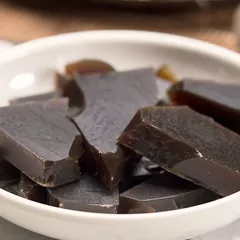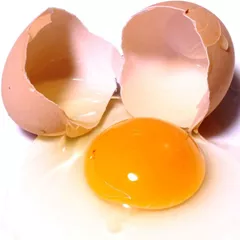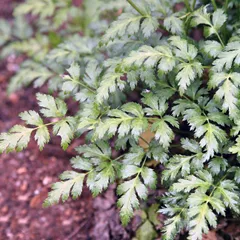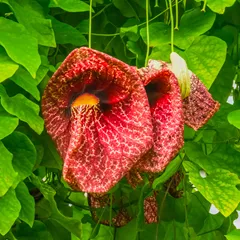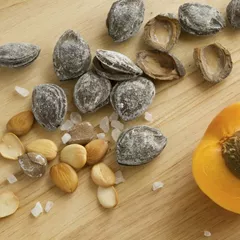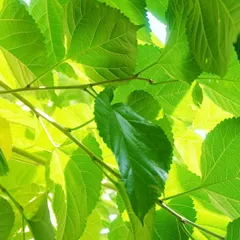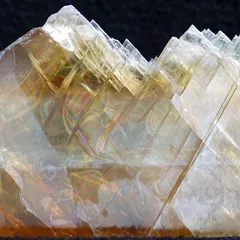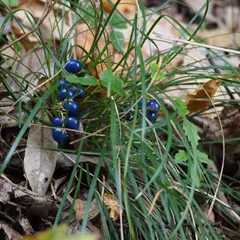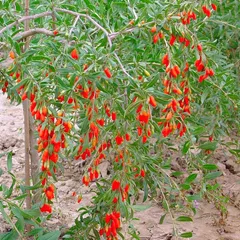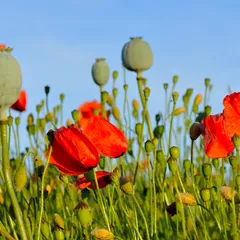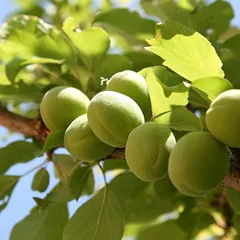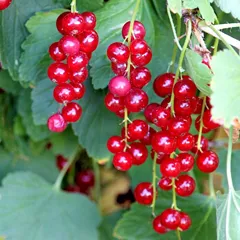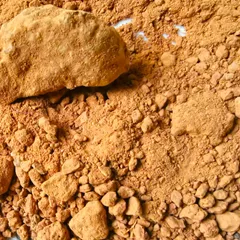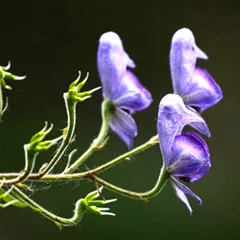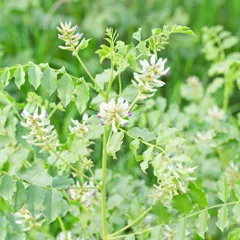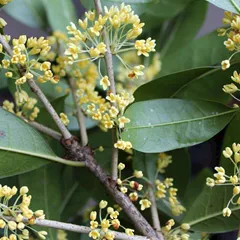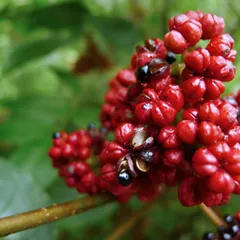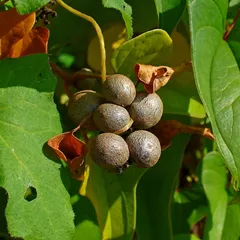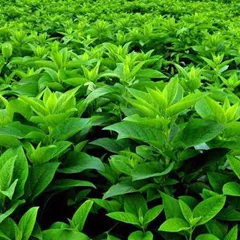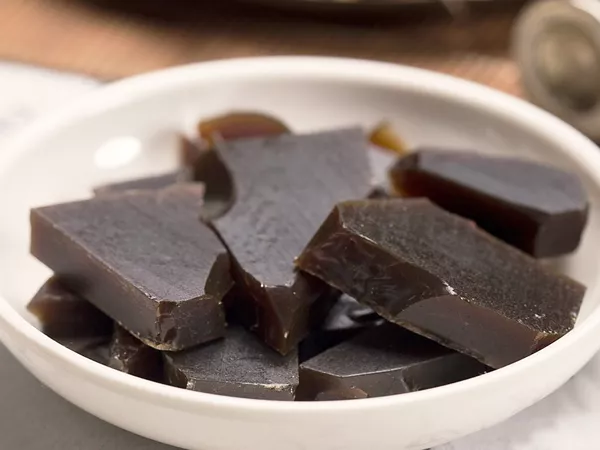
E Jiao
E Jiao
English: Donkey-hide gelatin
Chinese: 阿胶
Use of E Jiao (donkey-hide gelatin) in TCM
Please note that you should never self-prescribe TCM ingredients. A TCM ingredient is almost never eaten on its own but as part of a formula containing several ingredients that act together. Please consult a professional TCM practitioner, they will be best able to guide you.
Preparation: The donkey skin is soaked in water to soften it and the hair are removed. The skin is then chopped into small pieces, put in boiling water and the gelatin is separated from the skin. The gelatin is boiled further and then left to cool down and ultimately dry into solidified pieces.
Dosage: 3 - 15 grams
Main actions according to TCM*: Tonifies and nourishes Blood. Stops bleeding. Moistens and lubricates Yin.
Primary conditions or symptoms for which E Jiao may be prescribed by TCM doctors*: Dizziness Pale face Palpitations Bloody sputum Blood in stools Abnormal uterine bleeding Insomnia Irritability Anemia Dry cough Hemoptysis Hematemesis Hematuria Excessive menstrual discharge
Contraindications*: Not for External conditions or conditions associated with Dampness caused by Spleen Deficiency.
Common TCM formulas in which E Jiao is used*
E Jiao Ji Zi Huang Tang
Source date: the Qing dynasty
Number of ingredients: 10 herbs
Formula key actions: Nourishes Yin. Nourishes Blood. Calms the Liver. Extinguishes Wind.
Conditions targeted*: EncephalitisMeningitis and others
E Jiao is a king ingredient in E Jiao Ji Zi Huang Tang. Like the name indicates, it means it has more power than other ingredients in the formula.
In E Jiao Ji Zi Huang Tang, E Jiao is heavy and thick. It nourishes the Yin and Blood, expels Wind, sedates the Yang, augments the Yin Body Fluids, and moistens the sinews .
Huang Lian E Jiao Tang
Source date: 220 AD
Number of ingredients: 5 herbs
Formula key actions: Enriches the Yin. Causes Fire to descend. Eliminates irritability. Calms the spirit.
Conditions targeted*: Nervous exhaustionAutonomic dystonia and others
E Jiao is a king ingredient in Huang Lian E Jiao Tang. Like the name indicates, it means it has more power than other ingredients in the formula.
In Huang Lian E Jiao Tang, E Jiao indirectly controls the Heart Fire by enriching the Yin and nourishing the Blood
Bu Fei E Jiao Tang
Source date: 1119 AD
Number of ingredients: 6 herbs
Formula key actions: Nourishes the Yin. Controls coughing. Stops bleeding. Tonifies the Lungs.
Conditions targeted*: Chronic bronchitisBronchiectasis and others
E Jiao is a king ingredient in Bu Fei E Jiao Tang. Like the name indicates, it means it has more power than other ingredients in the formula.
In Bu Fei E Jiao Tang, E Jiao nourishes the Yin and tonifies the Lungs, stops the bleeding, and nourishes the Blood.
Qing Zao Jiu Fei Tang
Source date: 1658 AD
Number of ingredients: 9 herbs
Formula key actions: Clears dryness. Moistens the Lungs.
Conditions targeted*: InfluenzaAcute bronchitis and others
E Jiao is an assistant ingredient in Qing Zao Jiu Fei Tang. This means that it either serves to reinforces the effect of other ingredients or it moderates their toxicity.
In Qing Zao Jiu Fei Tang, E Jiao moistens the Lungs and nourish the Lung Yin. It harmonizes the Heat-clearing and Lung Qi-disseminating actions of the other ingredients with a moistening action.
Qing Re Gu Jing Tang
Source date: 1988
Number of ingredients: 11 herbs
Formula key actions: Clears Empty Heat. Tonifies the Kidney Yin. Stops bleeding. Supplies Body Fluids.
Conditions targeted*: MetrorrhagiaThreatened miscarriage and others
E Jiao is an assistant ingredient in Qing Re Gu Jing Tang. This means that it either serves to reinforces the effect of other ingredients or it moderates their toxicity.
In Qing Re Gu Jing Tang, E Jiao tonifies the Blood, nourishes the Blood and stops bleeding.
Jiu Xian San
Source date: Yuan dynasty
Number of ingredients: 9 herbs
Formula key actions: Secures the Lungs. Stops coughing. Augments Qi . Nourishes Yin.
Conditions targeted*: Chronic bronchitisAsthma and others
E Jiao is an assistant ingredient in Jiu Xian San. This means that it either serves to reinforces the effect of other ingredients or it moderates their toxicity.
In Jiu Xian San, E Jiao nourishes the Lung Yin, also serves a minor astringent function.
Huang Tu Tang
Source date: 220 AD
Number of ingredients: 7 herbs
Formula key actions: Warms the Yang. Strengthens the Spleen. Nourishes the Blood. Stops bleeding.
Conditions targeted*: Chronic hemorrhagic gastritisPeptic ulcers and others
E Jiao is an assistant ingredient in Huang Tu Tang. This means that it either serves to reinforces the effect of other ingredients or it moderates their toxicity.
In Huang Tu Tang, E Jiao nourishes the Yin and Blood and stop bleeding. Long-term blood loss can lead to Liver Yin and Blood Deficiency, which risks the development of internal Heat.
This herb is added because the warming and acrid herbs in this formula poses
a problem when there is bleeding, as they accentuate the depletion of the Blood and Yin that occurs just from the loss of blood itself.
In addition, their warming nature can incite the reckless movement of Blood that can lead to further bleeding.
Together with other assistant herb of the formula, it counterbalance the warming and drying nature of Atractylodes rhizome and Prepared aconite.
Wu Shi Lian Mei Tang
Source date: 1798 AD
Number of ingredients: 5 herbs
Formula key actions: Drains Heat. Preserves Body Fluids. Transforms Yin .
Conditions targeted*: Supraventricular tachycardiaDiabetes and others
E Jiao is an assistant ingredient in Wu Shi Lian Mei Tang. This means that it either serves to reinforces the effect of other ingredients or it moderates their toxicity.
In Wu Shi Lian Mei Tang, E Jiao tonifies the Blood and increases the Yin Body Fluids. It also softens the Liver to extinguish the Wind and assisting the Kidneys to govern the water.
It is black in color and sinking in nature, also serves as an envoy that guides the formula into the Interior and the Lesser Yin and Terminal Yin Stage.
Zhi Gan Cao Tang
Source date: 220 AD
Number of ingredients: 10 herbs
Formula key actions: Augments the Qi. Nourishes Yin. Nourishes the Blood. Restores the pulse.
Conditions targeted*: Irregular heartbeatsSick sinus syndrome and others
E Jiao is an assistant ingredient in Zhi Gan Cao Tang. This means that it either serves to reinforces the effect of other ingredients or it moderates their toxicity.
In Zhi Gan Cao Tang, E Jiao effectively enriches the Yin, tonifies the Blood, and moistens Dryness.
The combination of E Jiao, Huo Ma Ren and Mai Dong assists Sheng Di Huang in enriching the Yin, moistening Dryness, and cooling
Heat from Yin Deficiency.
Wen Jing Tang
Source date: 220 AD
Number of ingredients: 12 herbs
Formula key actions: Warms the Uterus and vessels. Nourishes Blood. Dispels Cold. Dispels Blood Stagnation.
Conditions targeted*: Dysfunctional uterine bleedingUterine hypoplasia and others
In Wen Jing Tang, E Jiao nourishes the Blood, tonifies the Yin, and regulates the Liver. In this formula, together with Dwarf lilyturf root, they focus on nourishing the Yin, moistening Dryness, and clearing Heat from Deficiency.
Tiao Gan Tang
Source date: 1827 AD
Number of ingredients: 7 herbs
Formula key actions: Nourishes Kidney and Liver Yin.
In Tiao Gan Tang, E Jiao nourishes Blood
Liang Di Tang
Source date: 1826 AD
Number of ingredients: 6 herbs
Formula key actions: Nourishes Yin. Cools Blood. Stop bleeding.
In Liang Di Tang, E Jiao nourishes Blood, which helps to nourish Yin. It also calms Blood and therefore helps to stop bleeding
Key TCM concepts behind E Jiao's properties
In Traditional Chinese Medicine (TCM), E Jiao belongs to the 'Herbs that invigorate the Blood' category. Like the name indicates these herbs tend to stimulate the Blood flow. In TCM they're used to help the circulation of Blood in cardiovascular conditions or menstrual irregularities as well as to treat acute pains caused by Blood Stagnation. They can also be used to treat Blood Stagnation when it causes certain tumors, cysts and hardened clots.
Furthermore E Jiao is Neutral in nature. This means that E Jiao typically doesn't affect the balance in your body. Balance between Yin and Yang is a key health concept in TCM. Eating too many "Hot" (Yang) ingredients can lead to an imbalance whereby one has a Yang Excess. The inverse is true as well: too many "Cold" (Yin) ingredients can lead to a Yin Excess. The Neutral nature of E Jiao means that you don't have to worry about that!
E Jiao also tastes Sweet. The so-called 'Five Phases' theory in Chinese Medicine states that the taste of TCM ingredients is a key determinant of their action in the body. Sweet ingredients like E Jiao tends to slow down acute reactions and detoxify the body. They also have a tonic effect because they replenish Qi and Blood.
The tastes of ingredients in TCM also determine what Organs and Meridians they target. As such E Jiao is thought to target the Kidney, the Liver and the Lung. According to TCM, the Kidneys do not only regulate the urinary system but also play a key role in the reproductive system and the growth and aging process of the body. The Liver on the other hand is often referred as the body's "general" because it is in charge of regulating the movements of Qi and the Body Fluids. It also takes a leading role in balancing our emotions. In addition to performing respiration, the Lungs are thought in TCM to be a key part of the production chain for Qi and the Body Fluids that nourish the body.

